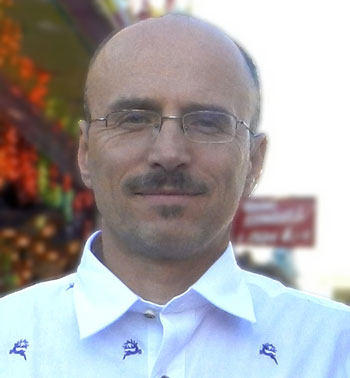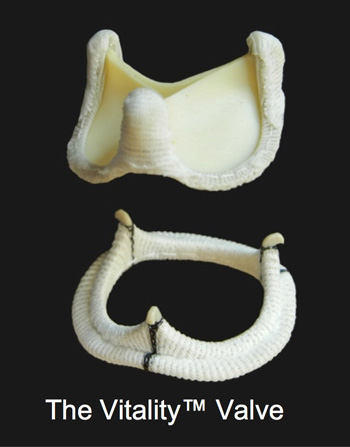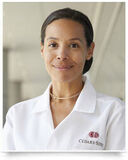Technology Update: The Two-Part Vitality Heart Valve Replacement Explained by Ivan Vesely, Founder of ValveXchange
By Adam Pick on October 15, 2013
New heart valve companies don’t pop up often. The last time there was an innovation rush in this field was about 10 years ago, when several transcatheter heart valve companies were launched to develop valves delivered to the patient’s heart via catheter. Since that time, the Edwards SAPIEN class of products got FDA approval in the United States, and a whole bunch more are being sold in Europe.
As we have previously discussed, TAVR procedures (also known as TAVI) is really great for patients that are high risk or inoperable. But… What about new valve replacement technologies for patients that are not sick enough for transcatheter valves? Well, there really hasn’t been a start-up company — with a unique approach to valve replacement therapy — in years. Then came… ValveXchange.

Originally started by noted heart valve scientist, Ivan Vesely, and having roots in the internationally renowned Cleveland Clinic, ValveXchange is a development-stage, Colorado-based company that is making waves with it’s two-part valve platform.
To learn more about ValveXchange and its potential implications for our patient community, I interviewed Ivan Vesely, its founder.
Interview Highlights From My Discussion with Ivan Vesely
Adam: Hello again Ivan! Thanks for agreeing to speak with me about the latest news and updates about ValveXchange.
Ivan: My pleasure. It’s great to chat with you again.
Adam: We get a number of e-mails from patients wanting to know when the product will be available for them… But first, can you tell us what is so special about Vitality, the valve replacement technology made by ValveXchange?
Ivan: There are several advantage of this device. First of all, it’s a two-part valve. This is important when you think of how a prosthetic valve works and ultimately wears out. In the case of the wheels of a car, its only the tire that wears out, not the rim, the suspension and the drive shafts. It’s the same in a heart valve. It’s the soft, pliable leaflets that wear out, not the hard frame that supports them or the cuff that is used to attach the valve to the patients’ heart. When you need to service your car and replace the tires, you don’t pull apart the entire suspension and drive-train – you just replace the tires.
The challenge with servicing a heart valve is that that frame of the valve is completely grown in and cannot be easily removed. It takes the surgeon about a hour to carefully cut away and remove the frame, pull the old valve out and then sew in a new valve in place. That’s because with regular valves, the leaflets don’t come off the frame. The Vitality valve is designed it so that part of the valve frame comes off with the leaflets – kind of like a wheel unbolting from the suspension, but much faster. A part of the old valve frame pulls off and a new one with fresh leaflets just snaps in place. The whole replacement procedure takes just a few minutes.

You can see the two parts of the valve on the image above. But the two-part valve approach isn’t just great for the patient during re-do surgery, it also makes the initial implant potentially easier for the surgeon. These days, surgeons would like to do very small incisions (Minimally Invasive Surgery) because it is cosmetically more attractive and patients recover faster. But that reduces visibility during valve implant and a lot of surgeons would rather not chance a mistake and therefore don’t do MIS. With the Vitality valve, you get amazing visibility into the heart, right through the open ring as the valve is being sewn in. This allows the surgeon to place to valve with greater precision and confidence, and that is potentially safer for the patient. So the Vitality™ really helps surgeons with their smaller incisions, mainly by giving them greater visibility. When it comes to the size of the incision, smaller is better, and the Vitality™ valve helps there without resorting to robots or sutureless approaches.
Adam: Is there any patient group that you feel is best served by the Vitality™ valve made by ValveXchange?
We think our two-part Vitality™ valve offers a huge advantage for younger patients that currently face mechanical valves and Coumadin. Because the Vitality™ valve is rapidly exchangeable, these young patients may be able to receive a tissue valve – instead of a mechanical valve – and have just the leaflet set replaced with less trauma to the heart, and less cardiac bypass time, later in life when the valve wears out.
Adam: Can you tell us about the next steps for ValveXchange? Last time we discussed this solution, you had just completed the first human implant of the Vitality with Dr. Chitwood and Dr. Svensson.
Ivan: Yes, that was almost two years ago when we did the first human implants in South America. Those patients are doing great! I visited them less than a year ago and they are so thrilled to be back on their feet with no complications. So, since the first implants were done in late 2011, we developed the full range of valve sizes, built a manufacturing facility and completed enrollment of patients in the larger European Clinical Trial. Now, we need to follow these patients for a total of 6 months, and then submit their clinical data to the authorities in Europe and if all goes well, we plan to be selling the valve in Europe in early 2014. At that time, European patients and surgeons can make use of this great technology. Americans should be able to get the valve a few years later when the United States trials are completed and the product is approved for sale in the United States.
Adam: Sounds like you and your team are making great progress. Is there anything else, you would like to share with our community about ValveXchange?
Ivan: Well, one of the things that we are particularly happy with is how well the valve performs relative to the gold standard – the Edwards valves. Edwards LifeSciences has been a real benchmark for us. When we were just a small company of a few people, we were told we couldn’t compete with the big boys – we couldn’t build a product that was as good as that of Edwards. But, now that we’ve done many human implants, our valve is performing at least as well as the old gold standard. We’ve got great hemodynamics, great quality and we’re helping patients and doctors in really new, innovative ways. 2014 will be an exciting year for ValveXchange!
Many thanks to Ivan Vesely for taking the time to share the latest developments regarding ValveExchange. Needless to say, I will continue to monitor the roll-out of this innovative device for valve replacement patients. To get those updates, you can subscribe to my free newsletter by clicking here.
Keep on tickin!
Adam












